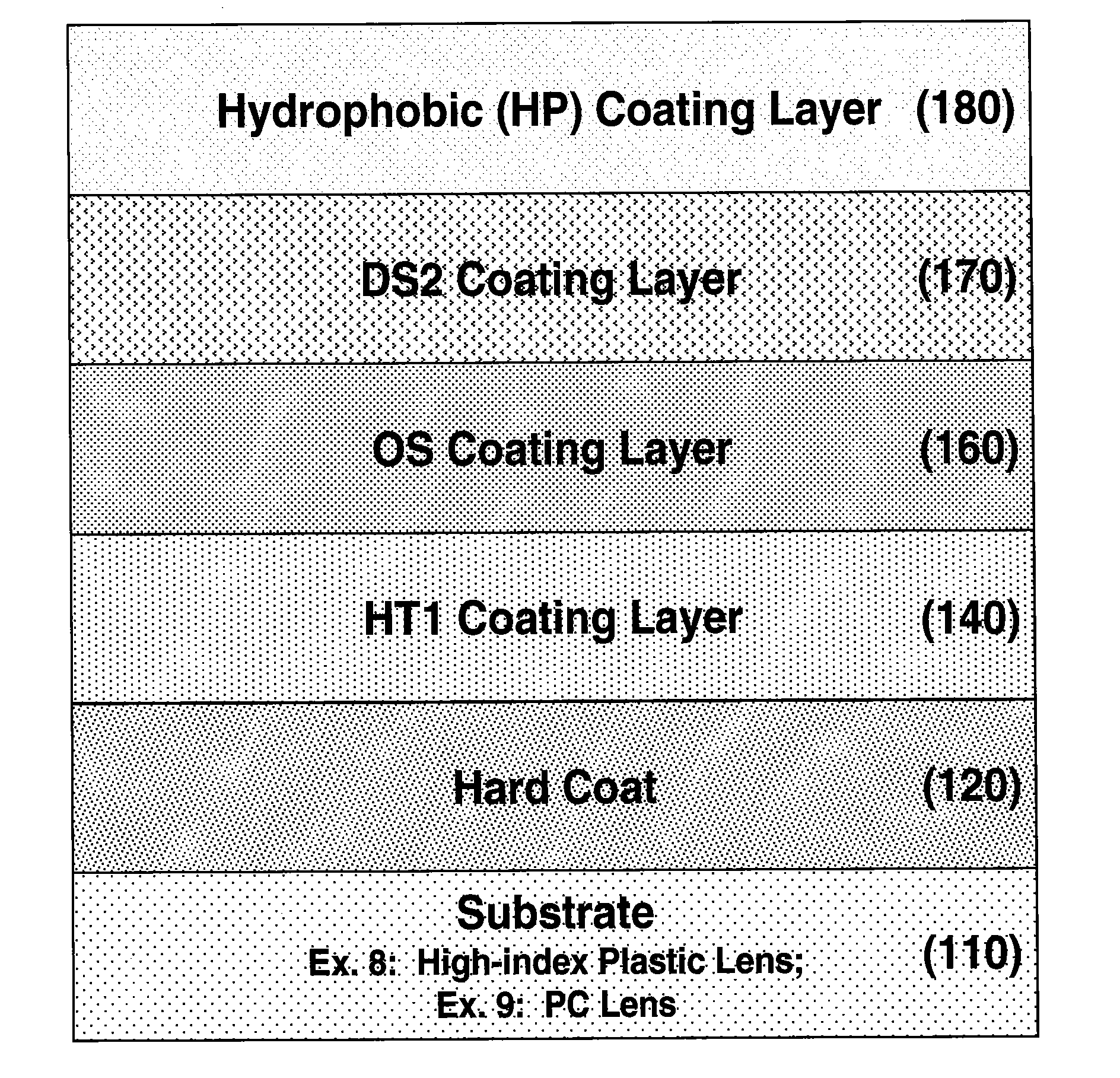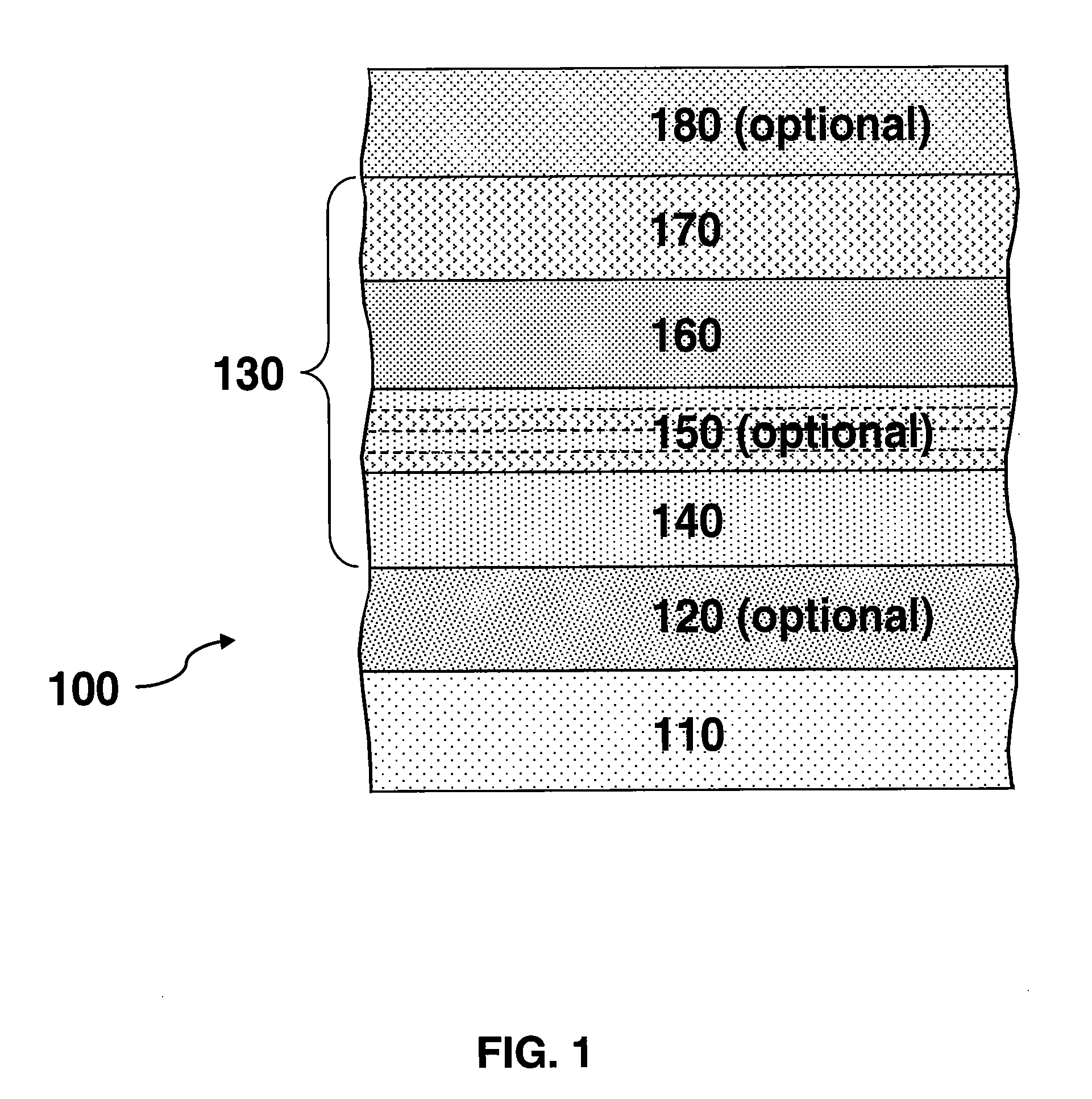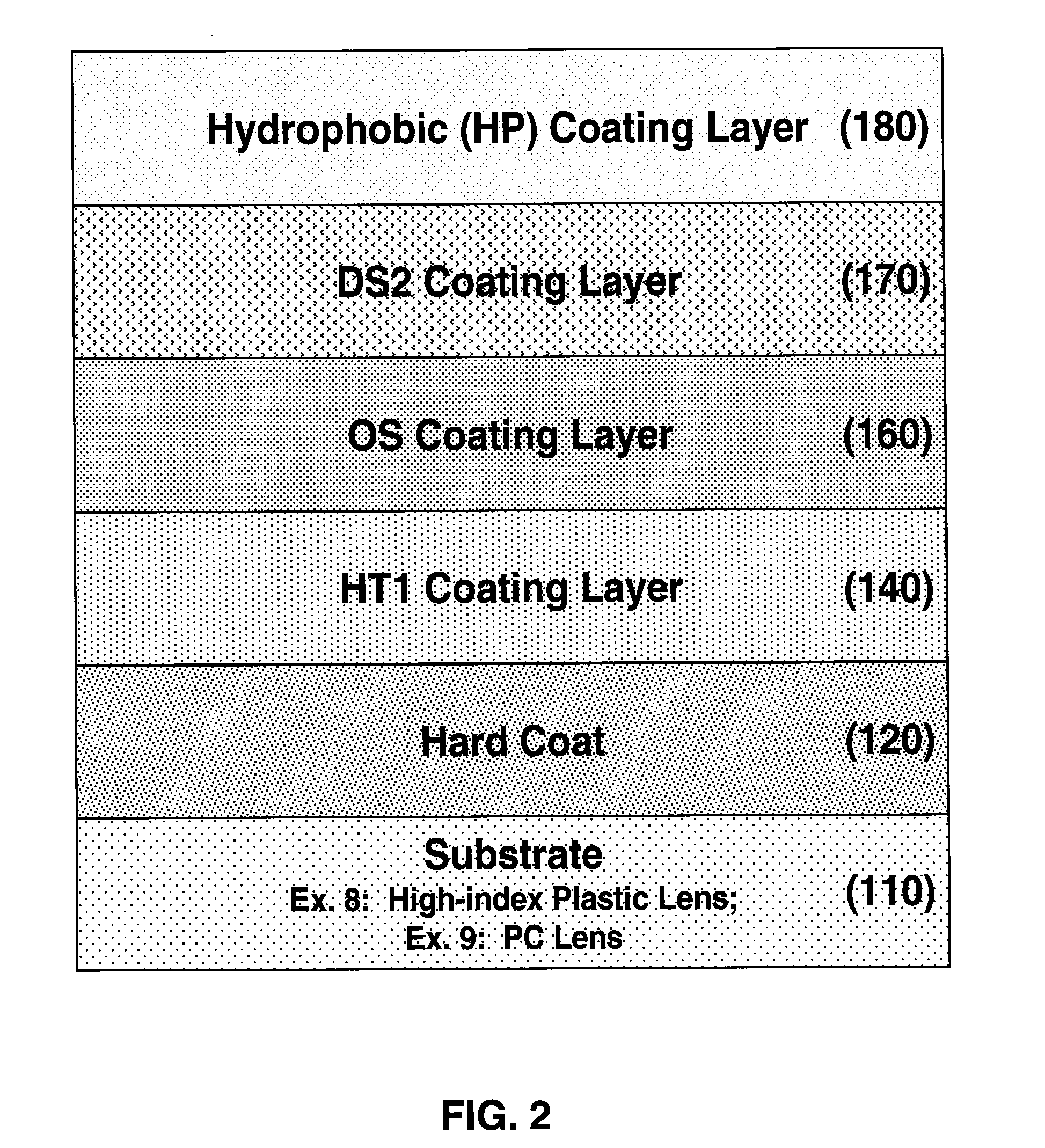Durable Anti-reflection coatings
a coating and anti-reflection technology, applied in coatings, instruments, optics, etc., can solve the problems of reducing the reflectivity, destroying the interference of reflected light, and reducing the reflectivity significantly over the visible wavelength range of 400 to 700 nanometers (nm), so as to reduce the reflectivity of light and excellent durability
- Summary
- Abstract
- Description
- Claims
- Application Information
AI Technical Summary
Benefits of technology
Problems solved by technology
Method used
Image
Examples
example 1
Preparation of an Epoxide-Silica Coating Composition (OS)
[0095]A low refractive index, epoxide-silica coating composition, designated as the “OS” composition, was prepared as follows:
[0096]In a closed plastic container, about 368.2 grams of reagent-grade ethanol (Fisher Chemical Co., catalog No. A995-4), about 77.5 grams of deionized water, about 8.6 grams of nitric acid (about 70 wt % HNO3) (Fisher Chemical Co., catalog No. A200-500) and about 1.0 grams of sodium acetate (Sigma Aldrich, catalog No. 470899) were mixed using a magnetic stirring plate, for about 30 minutes at about 350 rpm and at 65° C., to form a first mixture. Then, about 81.8 grams of tetramethyl orthosilicate (a non-epoxy-functional silicon alkoxide, Sigma Aldrich, catalog No. 218472) were added to the first mixture, to form a second mixture. The second mixture was stirred for about 2 hours, at about 350 rpm and at 65° C. Then, about 497.3 grams of reagent-grade ethanol and 865.5 grams of 1-methoxy-2-propanol (Sig...
example 2
Preparation of a Low Refractive Index Silica Coating Composition (DS2)
[0099]This low-refractive index silica coating composition, designated as the “DS2” composition, was prepared as follows:
[0100]In a closed plastic container, about 199.7 grams of reagent-grade ethanol, about 46.0 grams of deionized water, about 5.1 grams of nitric acid (70 wt %), and about 0.6 grams of sodium acetate were mixed for about 30 minutes, at about 350 rpm and at 65° C., to form a first mixture. Then, about 48.6 grams of tetramethyl orthosilicate (a silicon alkoxide) were added to the first mixture, to form a second mixture. The second mixture was stirred for about 2 hours, at about 350 rpm and at 65° C. Then, about 684.9 grams of reagent-grade ethanol and 1015.1 grams of 1-methoxy-2-propanol were added to the second mixture, to form a third mixture. After stirring the third mixture for about 15 hours at about 350 rpm and at ambient temperature, it was filtered through a 0.2-μm filter, to form the DS2 co...
example 3
Preparation of a High Refractive Index Titania Coating Composition (HT1)
[0101]The preparation of this high-refractive index coating composition, designated as the “HT1” composition, was described in detail in US Patent Application US 2008 / 0003373 A1 to Yan et al, the contents of which are incorporated by reference.
[0102]In a closed plastic container, about 317.1 grams of reagent-grade ethanol, about 5.9 grams of hydrochloric acid (about 36 wt % HCl) (Fisher Chemical, catalog No. A508-500), and about 5.7 grams of deionized water were mixed for about 5 minutes using a magnetic stirrer, at about 200 rpm and at ambient temperature, to form a first mixture. Then, about 106.4 grams of titanium(IV) isopropoxide (Sigma Aldrich, catalog No. 205273) were added to the first mixture, to form a second mixture, and this second mixture was stirred for about 60 minutes, at about 200 rpm and at ambient temperature. Then, about 1552.5 grams of reagent-grade ethanol, about 2.1 grams of hydrochloric ac...
PUM
| Property | Measurement | Unit |
|---|---|---|
| Thickness | aaaaa | aaaaa |
| Nanoscale particle size | aaaaa | aaaaa |
| Mechanical properties | aaaaa | aaaaa |
Abstract
Description
Claims
Application Information
 Login to View More
Login to View More - R&D
- Intellectual Property
- Life Sciences
- Materials
- Tech Scout
- Unparalleled Data Quality
- Higher Quality Content
- 60% Fewer Hallucinations
Browse by: Latest US Patents, China's latest patents, Technical Efficacy Thesaurus, Application Domain, Technology Topic, Popular Technical Reports.
© 2025 PatSnap. All rights reserved.Legal|Privacy policy|Modern Slavery Act Transparency Statement|Sitemap|About US| Contact US: help@patsnap.com



